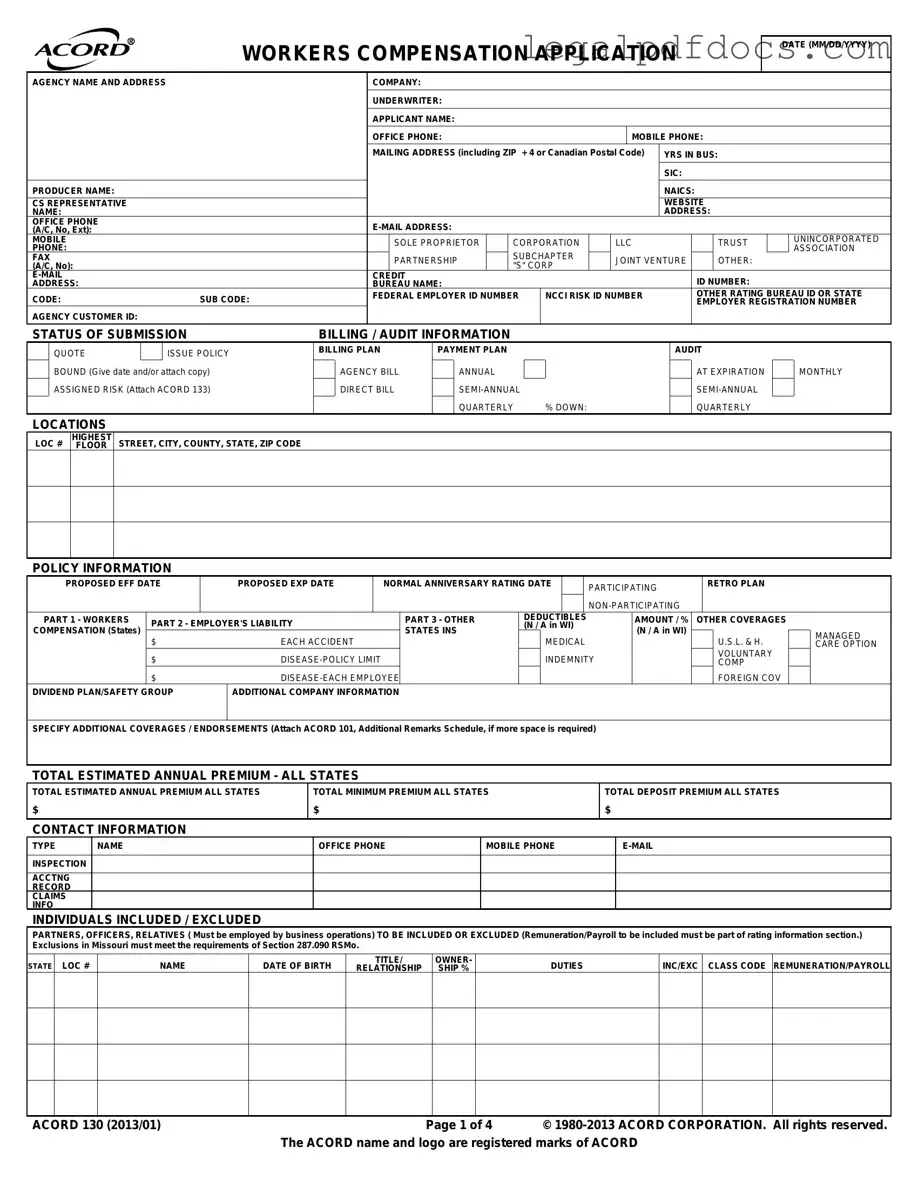Fill Out a Valid Acord 130 Template
The Acord 130 form serves as a vital application for workers' compensation insurance, gathering essential information about businesses and their employees. This form facilitates the underwriting process by detailing the applicant's operations, payroll, and coverage needs. For business owners seeking to protect their workforce, completing the Acord 130 is a crucial step in securing the necessary insurance coverage.
Ready to fill out the Acord 130 form? Click the button below to get started!
Open Acord 130 Editor Here
